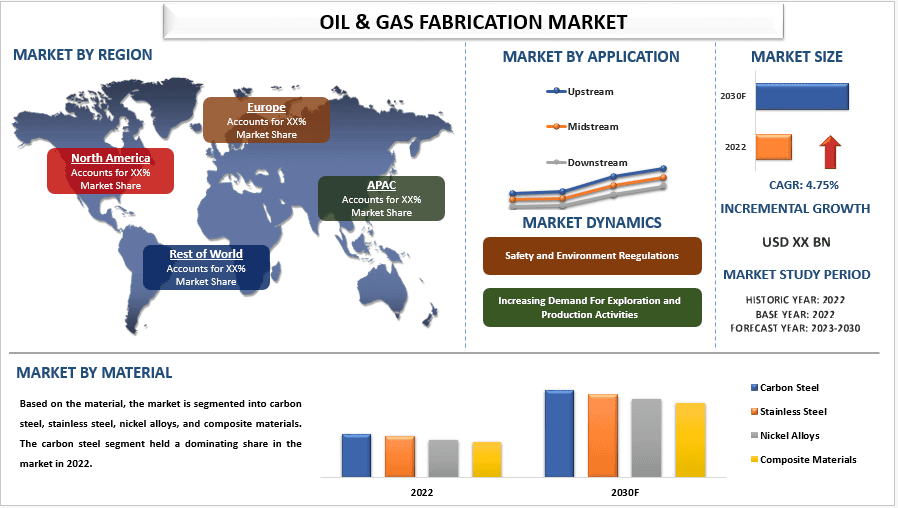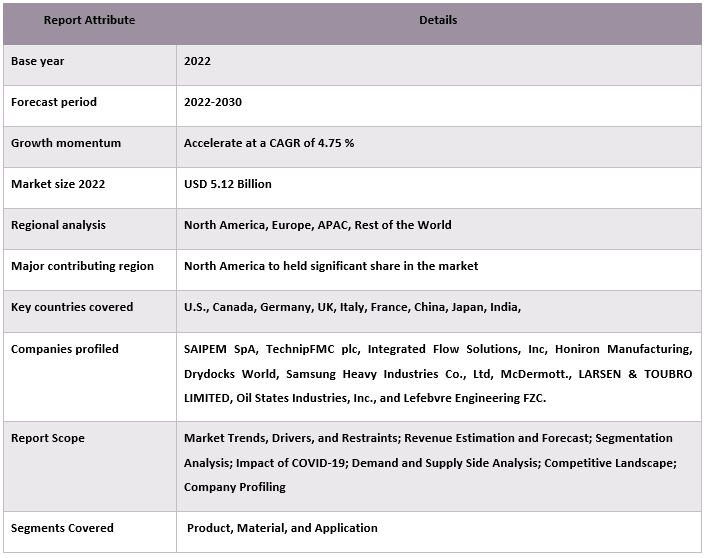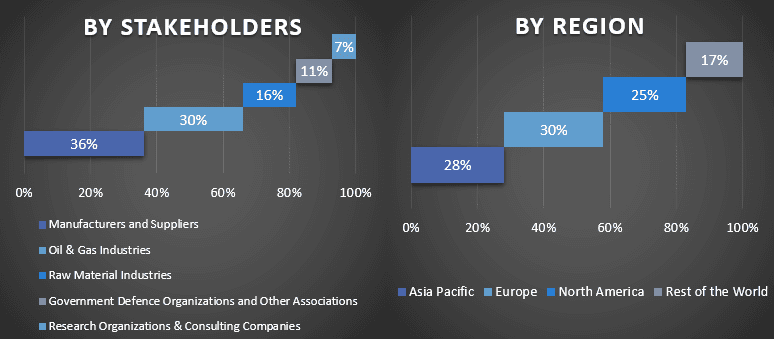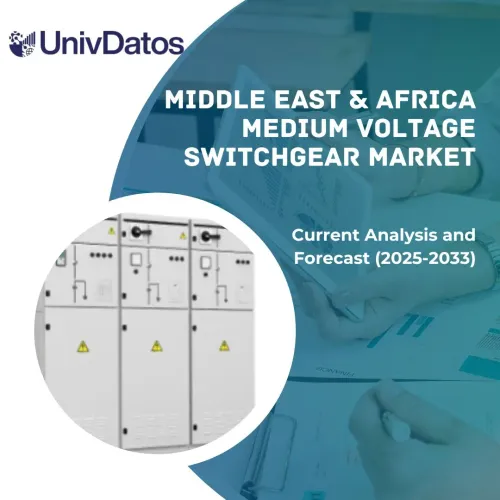石油・ガス製造市場:現在の分析と予測(2022年~2030年)
製品の重点(オフショア、オンショア、配管、構造物)、用途(上流、中流、下流)、材料(炭素鋼、ステンレス鋼、ニッケル合金、複合材料)、地域/国

石油・ガス製造市場 – 現在のシナリオと予測 (2022年~2030年)
石油・ガス製造市場は、予測期間中に約4.75%の力強いCAGRで成長すると予想されています。世界のエネルギー消費、特に発展途上国では、依然として石油とガスへの依存度が高い状況が続いています。この持続的な需要が、インフラの継続的な拡張とアップグレードの必要性を煽り、製造市場を牽引しています。さらに、容易にアクセスできる資源の枯渇により、より深い海域やシェールのような非従来型の地層への探査が推進されています。これにより、特殊な機器やインフラが必要となり、製造業者に機会が生まれています。自動化、ロボット工学、デジタル化が製造プロセスに革命をもたらし、効率、安全性、生産性を向上させています。これにより、コスト削減とプロジェクト期間の短縮を通じて、市場の成長が促進されます。例えば、2023年には、SPX Flowが食品および製薬業界向けの噴霧乾燥ソリューションを専門とするDrytech事業の買収を発表しました。この取引は、成長する乾燥技術市場におけるSPX Flowの能力拡大を目的としていました。
市場で事業を展開している主要なプレーヤーには、SAIPEM SpA、TechnipFMC plc、Integrated Flow Solutions, Inc、Honiron Manufacturing、Drydocks World、Samsung Heavy Industries Co., Ltd、McDermott.、LARSEN & TOUBRO LIMITED、Oil States Industries, Inc.、Lefebvre Engineering FZCなどがあります。これらのプレーヤーは、ハイテクで革新的な製品/技術で顧客を支援するために、いくつかのM&Aやパートナーシップを実施しています。
レポートで提示される洞察
「製品別では、2022年の市場においてオフショアが大きなシェアを占めました。」
製品に基づいて、市場はオフショア、オンショア、配管、構造物に分類されます。これらのうち、オフショアセグメントは、オンショア井戸よりもはるかに大きな貯留層にアクセスできることが多いため、潜在的な収量が高くなるオフショア井戸により、2022年の市場で大きなシェアを占めました。これにより、特に単一の井戸の長期的な利点を考慮すると、オフショアプロジェクトはオンショアプロジェクトよりも経済的に実行可能になる可能性があります。さらに、オフショアプラットフォーム、海底システム、およびその他の関連機器には、複雑なエンジニアリング、厳格な規制、および高級材料が関与します。このユニットあたりの価値の高さが、オフショアセグメントの全体的な市場シェアに貢献しています。
「用途別では、ダウンストリームセグメントが市場で大きな成長を示しました。」
市場は、用途に基づいて、上流、中流、下流に分類されます。これらのうち、ダウンストリームセグメントは、石油およびガス製造市場のダウンストリームセクターが近年大幅に成長したため、2022年に優位を占めました。ダウンストリーム産業は、石油およびガス製品の精製、処理、および最終消費者への流通に焦点を当てています。このセクターは、原油をガソリン、ディーゼル、ジェット燃料、石油化学製品などの精製製品に変換する上で重要です。エネルギーに対する世界的な需要の増加、および産業活動と輸送の拡大が、ダウンストリームセクターの成長を促進しています。さらに、新興国における石油誘導体の消費量の増加が、このセクターの成長に貢献しています。
「アジア太平洋地域は、2022年の石油・ガス製造市場で大きな成長を遂げました。」
アジア太平洋地域は、2022年の石油・ガス製造市場で大きな成長を遂げるでしょう。中国、インド、東南アジアなどの国の急速な工業化と都市化により、エネルギー消費量が増加しています。これにより、石油およびガス製品に対する需要が高まり、この地域での製造施設の必要性が高まっています。この専門知識は、さまざまな産業のニーズを満たす高度な石油・ガス製造の開発にうまくつながっています。さらに、多くのアジア太平洋諸国は主要な輸送路の近くに位置しているため、石油とガスの生産と輸送に理想的です。たとえば、インドネシアとマレーシアは、中東と北米をアジア市場に接続する主要な輸送ルート沿いに位置しています。さらに、シンガポール、韓国、マレーシアなどの国には、確立された造船およびオフショアエンジニアリング産業があり、石油およびガス製造市場の成長をサポートできる熟練労働者が多数います。
石油・ガス製造市場レポートの範囲

このレポートを購入する理由:
- この調査には、認証された主要業界の専門家によって検証された市場規模と予測分析が含まれています。
- このレポートは、業界全体のパフォーマンスの概要を一目で示しています。
- このレポートは、主要なビジネス財務、製品ポートフォリオ、拡張戦略、および最近の開発に主な焦点を当てて、著名な業界ピアの詳細な分析を網羅しています。
- 業界で普及している推進要因、制約、主要なトレンド、および機会の詳細な検討。
- この調査では、さまざまなセグメントにわたる市場を包括的に網羅しています。
- 業界の地域レベル分析の詳細な分析。
カスタマイズオプション:
世界の石油・ガス製造市場は、要件またはその他の市場セグメントに応じて、さらにカスタマイズできます。これに加えて、UMIは、お客様独自のビジネスニーズがある可能性があることを理解しているため、お客様の要件に完全に適合するレポートを入手するために、お気軽にお問い合わせください。
目次
石油・ガス製造市場分析(2022年~2030年)の調査方法
世界の石油・ガス製造市場の過去の市場を分析し、現在の市場を推定し、将来の市場を予測することは、世界の主要地域における石油・ガス製造の採用を創出し分析するために行われた3つの主要なステップでした。徹底的な二次調査を実施し、過去の市場数値を収集し、現在の市場規模を推定しました。次に、これらの洞察を検証するために、多数の調査結果と仮定が考慮されました。さらに、世界の石油・ガス製造市場のバリューチェーン全体の業界専門家との広範な一次インタビューも実施されました。一次インタビューを通じて市場数値を仮定および検証した後、トップダウン/ボトムアップアプローチを採用して、市場全体の規模を予測しました。その後、市場の分解とデータ三角測量法を採用して、業界のセグメントおよびサブセグメントの市場規模を推定および分析しました。詳細な方法論を以下に説明します。
過去の市場規模の分析
ステップ1:二次情報源の詳細な調査:
年次報告書および財務諸表、業績プレゼンテーション、プレスリリースなどの企業内部情報源、およびジャーナル、ニュースおよび記事、政府刊行物、競合他社の刊行物、セクターレポート、サードパーティデータベース、その他の信頼できる刊行物を含む外部情報源を通じて、石油・ガス製造市場の過去の市場規模を取得するために、詳細な二次調査を実施しました。
ステップ2:市場セグメンテーション:
石油・ガス製造市場の過去の市場規模を取得した後、主要地域のさまざまなセグメントおよびサブセグメントに関する過去の市場の洞察とシェアを収集するために、詳細な二次分析を実施しました。主要なセグメントは、レポートに材料、製品、およびアプリケーションとして含まれています。さらに、その地域における石油・ガス製造の全体的な採用を評価するために、国レベルの分析を実施しました。
ステップ3:要因分析:
さまざまなセグメントおよびサブセグメントの過去の市場規模を取得した後、石油・ガス製造市場の現在の市場規模を推定するために、詳細な要因分析を実施しました。さらに、石油・ガス製造市場の材料、製品、およびアプリケーションなどの従属変数および独立変数を使用して、要因分析を実施しました。世界の石油・ガス製造市場セクターにおけるトップパートナーシップ、M&A、事業拡大、および製品発売を考慮して、需要側と供給側のシナリオを徹底的に分析しました。
現在の市場規模の推定と予測
現在の市場規模の算定:上記の3つのステップからの実行可能な洞察に基づいて、現在の市場規模、世界の石油・ガス製造市場の主要なプレーヤー、およびセグメントの市場シェアに到達しました。必要なすべてのパーセンテージシェア分割と市場の内訳は、上記の二次アプローチを使用して決定され、一次インタビューを通じて検証されました。
推定と予測:市場の推定と予測のために、ドライバーとトレンド、制約、および利害関係者が利用できる機会を含むさまざまな要因に重みが割り当てられました。これらの要因を分析した後、主要な市場全体でさまざまなセグメントおよびサブセグメントの2030年の市場予測に到達するために、関連する予測手法、つまりトップダウン/ボトムアップアプローチが適用されました。市場規模の推定に採用された調査方法は、以下を包含します。
- 収益(USD)の観点からの業界の市場規模、および国内の主要な市場全体での石油・ガス製造市場の採用率。
- 市場セグメントおよびサブセグメントのすべてのパーセンテージシェア、分割、および内訳
- 提供される製品の観点から見た、世界の石油・ガス製造市場の主要なプレーヤー。また、この急速に成長している市場で競争するために、これらのプレーヤーが採用した成長戦略。
市場規模とシェアの検証
一次調査:主要地域全体のトップレベルのエグゼクティブ(CXO/VP、営業責任者、マーケティング責任者、オペレーション責任者、地域責任者、カントリーヘッドなど)を含む、主要なオピニオンリーダー(KOL)との詳細なインタビューを実施しました。次に、一次調査の結果を要約し、述べられた仮説を証明するために統計分析を実施しました。一次調査からのインプットは二次的な調査結果と統合され、それによって情報を実行可能な洞察に変えました。
さまざまな地域における主要参加者の分割

市場エンジニアリング
データ三角測量法を採用して、市場全体の推定を完了し、世界の石油・ガス製造市場の各セグメントおよびサブセグメントの正確な統計数値に到達しました。世界の石油・ガス製造市場における材料、製品、およびアプリケーションの分野におけるさまざまなパラメーターとトレンドを調査した後、データをいくつかのセグメントとサブセグメントに分割しました。
世界の石油・ガス製造市場調査の主な目的
世界の石油・ガス製造市場の現在および将来の市場動向が調査で指摘されました。投資家は、調査で実施された定性的および定量的な分析に基づいて、投資に対する裁量権の基盤となる戦略的な洞察を得ることができます。現在および将来の市場動向は、地域レベルでの市場の全体的な魅力を決定し、産業参加者が未開拓市場を利用して先行者利益の恩恵を受けるためのプラットフォームを提供しました。調査のその他の定量的な目標は次のとおりです。
- 価値(USD)の観点から、石油・ガス製造市場の現在および予測される市場規模を分析します。また、さまざまなセグメントおよびサブセグメントの現在および予測される市場規模を分析します。
- 調査のセグメントには、材料、製品、およびアプリケーションとしての分野が含まれます。
- 石油・ガス製造の規制の枠組みを定義および分析します
- さまざまな仲介業者の存在に伴うバリューチェーンを分析するとともに、業界の顧客と競合他社の行動を分析します。
- 主要地域における石油・ガス製造市場の現在および予測される市場規模を分析します。
- レポートで調査された地域の主要国には、アジア太平洋、ヨーロッパ、北米、および世界のその他の地域が含まれます。
- 石油・ガス製造市場の会社概要と、急速に成長している市場で維持するために市場プレーヤーが採用した成長戦略。
- 業界の詳細な地域レベルの分析
よくある質問 よくある質問
Q1: 世界の石油・ガス製造市場の現在の市場規模と成長の可能性は?
Q2: 世界の石油・ガス fabrication 市場の成長を牽引する要因は何ですか?
Q3: アプリケーション別で、世界の石油・ガス加工市場において最大のシェアを占めるセグメントはどれですか?
Q4: 世界の石油・ガス製造市場で大きなシェアを占める地域はどこですか?
Q5:世界の石油・ガス製造市場で活動している主要なプレーヤーは誰ですか?
関連 レポート
この商品を購入したお客様はこれも購入しました










